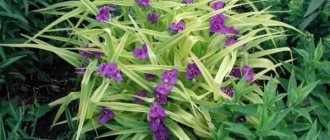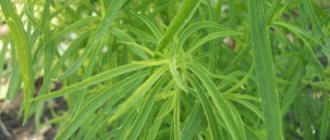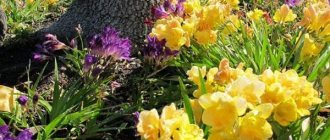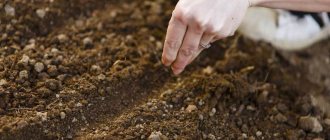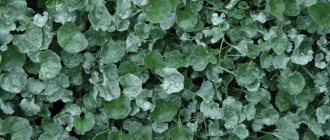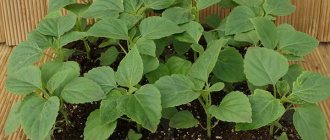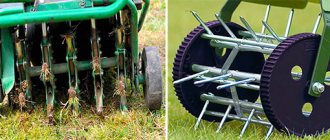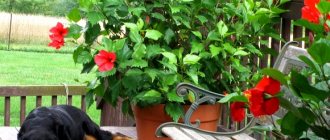Physalis is a rather original plant that looks like a flower, although in fact it is a fruit and belongs to the Solanaceae family. It has a number of beneficial properties, therefore it is used in food and as a medicinal product. But it is worth understanding that we are talking specifically about the edible variety of physalis, since there is also a decorative species.
In total, there are more than one hundred and twenty varieties of this plant. Each of them has its own characteristic feature, in particular the taste characteristics, appearance and, naturally, the timing of fruit ripening.
Features of Physalis

Physalis is a herbaceous annual or perennial. The geniculate shoots can be branched, angularly curved or erect. They are completely naked or have slight pubescence in the upper part. The height of the stems varies from 0.2 to 1.2 m. Gradually, the shoots at the base become woody. The leaf plates are oppositely located, while at the bottom of the shoot they are brought together in pairs or alternately arranged. Single axillary flowers grow along the entire length of the shoot. The swollen bell-shaped cups are painted in a rich color; inside there are two-cavity spherical fruits of red or orange color - these are the fragrant physalis berries. This plant is ornamental, despite the fact that a large number of its species have berries that have high taste and can be eaten. Physalis perennial is called the Chinese lantern; this plant looks great in a winter bouquet.
Unpretentious plants for the garden. Physalis Franchet. Japanese lanterns.
Growing physalis from seeds

Sowing
If physalis is grown in a region with a warm climate, then sowing should be done directly into open soil. This flower is cold-resistant, productive and early ripening. It easily propagates by self-sowing, and the gardener will only have to timely thin out the seedlings. Seeds remain viable for 4 years. Immediately before sowing, the seeds should be placed in a salt solution (5%) for some time. The floating seeds must be collected and thrown away, the same ones that have settled should be washed and kept in a dark pink solution of potassium permanganate for 30 minutes. After this, they are washed and dried again. Sowing seeds in open ground should be done in April or the first days of May. They need to be laid out in prepared furrows, while trying to keep the crops not dense; the row spacing should be about 0.3 m. After the seedlings appear, they should be thinned out, keeping a distance of about 25 centimeters between them. If desired, the uprooted seedlings can be planted in another place; they will take root quite quickly and well, but they will bear fruit later. Sowing can be done before winter and is done in October.
Seedling

In mid-latitudes, this plant is grown exclusively through seedlings. Physalis grown in this way will produce fruits somewhat earlier than those sown in open ground. Sowing is carried out 4–6 weeks before the day the plants are planted in open soil. To do this, you can use individual containers, the volume of which should be 500 ml. You can also sow seeds in boxes, following the 6x8 pattern, and such seedlings do not need picking. Before starting sowing, sow the seeds for 30 minutes. immersed in a strong solution of potassium manganese. After sowing, the containers are placed in a warm (about 20 degrees) place; seedlings should appear after 7 days. If the containers are in a cooler place, seedlings will appear only after 4 weeks. Seedlings must be provided with not too high humidity in the air and substrate, otherwise they may become infected with blackleg. In this regard, the seedlings will need systematic ventilation, but keep in mind that physalis reacts negatively to drafts. It should also be taken into account that plants need diffused bright light. If the seedlings are provided with proper care and the necessary lighting, but they practically do not grow or are very elongated, they will need feeding. To do this, use a solution of bird droppings (water is mixed with droppings in a ratio of 20:1), about 5 liters of the nutrient mixture should be used per 1 square meter. Then the substrate is spilled with clean water so that the plants do not get burned.
Picking
If the seedlings are very dense, you will need to pick. After the plants have 2 true leaf blades, they are seated in individual cups, being careful not to damage the overgrown root system. Physalis sown in individual containers do not need picking; they are grown in them until the day of planting.
Growing Physalis
Methods of growing physalis used by gardeners in their plots
Perennial physalis is propagated by cuttings and seeds, but annual physalis limits its distribution only by seed.
| Method | Technology |
| Cuttings for perennials The method is suitable for growing crops in a greenhouse. | 1. The top of the stem is cut off with developed internodes (3 pieces). 2. Planting directly into loose soil. 3. Deepen the cuttings to half their length. 4. Watering followed by covering with a film with holes (ventilation). 5. Shade from direct sunlight. 6. Do not allow the soil to dry out. 7. Remove the film after complete rooting. 8. Further care is provided as for an adult plant. |
| 1 way with seeds | 1. Sow seeds in planting pots filled with soil. Time: first ten days of May. 2. The container is buried in the garden, shaded, covered, ventilated. 3. Grown-up seedlings are transplanted to a permanent place of residence. |
| 2 way with seeds | 1. Seeds are sown in planting containers in early spring (March, April). 2. Water, cover with glass. 3. Temperature for seedlings + 20°C. 4. Watering and fertilizing according to recommendations for physalis seedlings. |
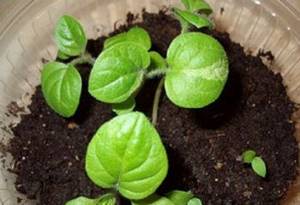
Physalis also reproduces without seedlings. Its disadvantage is late fruiting, but its advantage is healthy, strong, hardened seedlings. Let us consider the technology of propagation by seeds in more detail.
Planting physalis in open ground
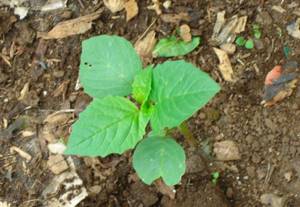
What time to plant
The seedlings are planted in open soil after they have developed 5 or 6 leaves. It is recommended to do this on a stormy day or in the second half of the day. For planting, you should choose a well-lit area, and the soil should be slightly alkaline or neutral. It is recommended to plant physalis in the place where cabbage or cucumbers were previously grown. Moreover, where peppers, eggplants, physalis, potatoes or tomatoes grew, such a plant should not be planted for 4 years, since all these crops are susceptible to infection by the same diseases, and their pathogens can remain in the soil for a long time. The site should be prepared at least half a month before planting, and wood ash and humus should be added to the soil for digging. Fresh manure cannot be used to fertilize the site.
Features of landing
When planting physalis, it should be taken into account that most species and varieties are highly branching. Therefore, seedlings should be planted in a checkerboard pattern in increments of 50 centimeters. Also, during planting, you should take into account that tall varieties need a garter. The depth of the planting hole should be such that the planted plant is immersed in it up to the first true leaf blade. If the seedlings are overgrown, then first pour 1.5 liters of water into the hole, and then lower the plant into it with an inclination directly into the water, while allowing the roots to straighten out on their own. Then the hole is filled with soil, which is compacted well. If the seedlings are not overgrown, then they are planted as usual, and then watered very well. To reduce the number of watering, weeding and loosening, the surface of the area should be covered with a layer of mulch (peat).
Picking physalis seedlings
The procedure is carried out in the phase of two leaves (real). Seedlings are thinned out or moved to larger containers. Before picking, seedlings need to be watered abundantly. Then the seedling with a lump of earth is pricked using a pointed object (peg). Branched and long roots are cut off.
The seedling is placed in the hole and pressed down with soil, holding the plant so as not to damage it. During the picking process, weak, blackleg-affected or underdeveloped specimens are rejected.
Picked seedlings are watered from the edge of the container so as not to disturb the position of the plant. If the soil settles, you will have to add more. The soil in the pots should be 1 cm below the top border of the container. The seedlings are buried down to the first leaves. Tall varieties are picked twice (if necessary) using the same technology.
Caring for physalis in the garden

Planting and growing physalis is quite simple. During the growing season, such flowers need to be systematically watered, and after this procedure, weeds must be removed and the soil surface loosened. They should also be fed regularly using organic fertilizers (a solution of chicken manure (1:15) or mullein (1:10)). Fertilizing is carried out only after watering. If the summer period turns out to be rainy and cool, then the physalis bushes will need to be hilled. The plant does not need pruning or pinching, and all because the berries grow in the branches of the shoots. Therefore, the yield directly depends on the branching of the bush.
Physalis propagation
How to grow physalis from seeds is described above. It can also be propagated by cuttings and lateral shoots. Ornamental physalis grows a large number of shoots from a creeping rhizome, which is not located very deep under the soil. Therefore, in spring or autumn, you can separate and dig up part of the rhizome, which should have developed shoots, which is then planted in a new place. Cuttings need to be harvested in July; for this, the upper parts of the shoots with two or three developed internodes are cut off. Then, for rooting, they are buried in ½ part of loose soil. At first, the cuttings will need shelter, which is created using perforated film. It will be possible to remove the shelter only when the leaf plates on the cuttings return to their previous turgor. During rooting, cuttings should be watered regularly and protected from direct sunlight.
Diseases and pests

Physalis has a fairly high resistance to diseases. However, it can be affected by a disease such as mosaic, and those specimens that are not properly cared for become infected most quickly. You can tell that a bush is affected by mosaic by the color of its leaf blades; it becomes contrasting and consists of spots of pale green and dark green. In infected bushes, the number of fruits is reduced by half. It is impossible to cure such a disease. In this regard, infected specimens must be dug up and destroyed. Then the area must be shed with a strong solution of potassium manganese.
Due to increased humidity, physalis seedlings may develop blackleg disease. This causes the stem to turn black at the base, which leads to the death of the plant. For preventive purposes, you should adhere to the following care rules: you need to systematically loosen the surface of the substrate, thin out the seedlings in time, and provide rare but abundant watering, which is carried out in the morning.
All nightshades suffer from phytosporosis. This disease most often appears in rainy weather during fruit ripening. As a result, brownish subcutaneous spots form on the surface of the berries; such fruit can no longer be eaten. To avoid the appearance of phytosporosis, it is necessary to spray the bushes with a solution of Bordeaux mixture (1%) before the ovary forms.
Of the pests, the most dangerous for physalis are wireworms and mole crickets, which injure its roots. To protect the plant from the mole cricket, it is planted in a plastic ring. To do this, you will need 2-liter plastic bottles; their narrow neck and bottom are cut off. The remaining middle part needs to be cut in half to make 2 rings. The resulting ring is first installed in the prepared planting hole, then the plant itself is planted. When the hole is filled with earth, it is important that the ring rises 50 mm above its surface. This way the young bush will be reliably protected from mole crickets.
To combat wireworms, baits are used. Several small holes should be dug in the area and hay or half-rotted grass should be placed in them, with boards placed on top of them. After a day or two, you need to check the bait, since quite a lot of wireworms should already have accumulated in it. The bait must be carefully removed and destroyed. Also, plowing or deep digging carried out in the autumn will help in the fight against this pest. The fact is that some of the wireworm larvae in this case will end up on the surface of the soil and freeze in winter.
However, it should be remembered that physalis is quite resistant to various diseases and if it is provided with proper care and optimal conditions for growth, it will not suffer from pests or diseases.
Growing Physalis in 5 minutes! From sowing to harvesting
How to prevent diseases and pest damage to physalis plantings
Similar diseases occur both in open ground and in greenhouses.
| Problem | Solution Possibilities |
| Blackleg | Abundant watering on an infrequent schedule. Thin out the seedlings. Soil disinfection (bazamide). |
| Mosaic | Maintain crop rotation. Destroy weeds. Comply with agricultural technology requirements. |
| Medvedka | Loosen row spacing (depth 15 cm) in May and June to destroy eggs. Hunting nests. |
| Wireworm | Deep autumn digging of the soil. Layout of baits. |
Physalis after flowering
Collecting seeds

The berries are picked along with the slightly dried, showy calyxes on a sunny day, 1.5–2 months after the physalis is transplanted into open soil (in August or September). The ripening of berries does not occur at the same time, so those that are located below become ripe much faster and fall to the surface of the plot. They can be collected and used for food or processing. You can also extract seeds from these berries if necessary. Take ripe berries and use a knife to divide them into 2 halves. Then they should be immersed in rainwater for 24 hours, and then the pulp should be rubbed through a sieve. The seeds must be washed and dried.
Wintering
If decorative perennial physalis is grown, then in the autumn the above-ground part should be cut off. It can be used to create very beautiful dry bouquets. The leaf blades must be cut off, and the shoots with fruits, which are hidden in bright sheaths, must be hung to dry. The surface of the site should be covered with a layer of mulch (peat) for the winter. Berry and vegetable annuals, after the fruits have been collected, must be disposed of, after which the soil on the site should be dug up.
Decorative physalis on the site - an element of landscape design
A beautiful perennial with an unpretentious character. The frost-resistant species can withstand temperatures down to -30°C. It is used as a decoration element in areas with good lighting and partial shade. It fits well with shrubs and trees; place a flower bed under the crown without damaging the physalis.
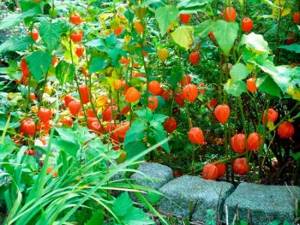
Decorative physalis in a flower bed
Tip #2. Grow physalis in slightly acidic soils to get a beautiful garden decor. Acidic soil needs to be limed.
It gratefully accepts organic matter and mineral supplements; watering is stopped in August so that the fruits ripen earlier and decorate the area. Like all perennials, it requires replanting after 5-7 years. This process occurs by dividing the rhizomes. Sowing seeds is a seedling method of plant propagation.
Recommended planting schemes for physalis for decorative design of the site:
- short - 40x50;
- medium-sized ones require 40x70;
- tall ones are planted in intervals of 60x80.
Maintain soil moisture level. Otherwise, stem rot appears. When planting in decorative flower beds, it requires restrictions so that the plant does not grow uncontrollably (it has such weakness).
Types and varieties of physalis with photos and names
Edible types of physalis are divided into physalis vegetable and physalis berry. Physalis berries include the following species: Florida physalis, pubescent physalis (either raisin or strawberry) and Peruvian physalis, which has become increasingly popular in recent years among gardeners in mid-latitudes, as well as their various varieties.
Physalis floridana

It has delicious sweet berries that have virtually no acid or fruity flavor. The jam made from them is very similar in taste to cherry jam; therefore, it is recommended to add geranium leaves to it.
Physalis pubescens

This type has a more refined taste. The berries are sweet with a slight sourness, as well as a distinct aroma and flavor of pineapple. If you squeeze the juice out of them, it will taste similar to tangerine. Such berries can be stored for about 3–4 months (sometimes up to 6 months), and after some time they become a little wilted. Dried berries taste similar to raisins.
Physalis peruviana

Compared to raisins, this type has less sweet fruits, but their fruity smell and taste are more pronounced. Moreover, the amount of sugar and acids in them is almost the same as in garden strawberries. The fruits are relatively tender, so they cannot be stored for a long time.
The most popular varieties of physalis berries:

- Pineapple . The variety is early ripening. The very small sweet berries have a pineapple scent. They are suitable for fresh consumption or for making candied fruits and jam.
- Strawberry . The bushes reach a height of 0.7 m; they produce sweet, amber-colored berries with a strawberry scent. They are eaten dried and fresh, and they are also used to make compotes, desserts and jams.
- Physalis raisin Surprise . The low-growing annual plant is distinguished by its unpretentiousness and strong pubescence. The variety is early ripening. The berries are eaten fresh or used to make desserts.
- Columbus . This tall plant loves warmth. Late ripening variety. The fruits contain a large amount of pectin, vitamins and microelements. They are consumed fresh and also used for making drinks and desserts.
- Magician . The very large berries are flattened and orange-brown in color, have a sweet-sour taste with a slight grapefruit bitterness and a distinct strawberry scent. The juice prepared from the fruit is similar to orange juice, but it has a brighter bouquet.
Mexican Physalis (Physalis ixocarpa)

Physalis vegetable is represented by one species - Mexican physalis (Physalis ixocarpa), or glutenous, as well as its varieties, of which there are many. The fruits of this plant are very large and similar to tomatoes. This species has tall varieties, as well as low-growing, spreading varieties. The color of the fruits can be green, yellow or purple, they have different shapes and sizes. These plants are not heat-loving and have high yields. Fresh fruits are not very tasty compared to berry varieties. However, they are widely used for making pickles, marinades, salads and caviar, which turn out excellent. The most popular varieties in mid-latitudes:
- Ground Gribovsky . This mid-early variety is characterized by productivity and frost resistance. The bush has a height of about 0.8 m and semi-erect branches. Sweet and sour pale green fruits weigh about 60 grams.
- Confectionery . The mid-season variety has large round fruits, a slightly sour taste and a dark or pale green color. They are used to prepare marinades, pickles and caviar, as well as homemade desserts.
- Korolek . The variety is early ripening. Used for making desserts and canned vegetables.
- Moscow early . The variety is early ripening. The branches are practically lying down. The pale yellow sweet fruits weigh about 80 grams.
Physalis decorative (Chinese lanterns)

This is a herbaceous perennial plant. Any part of this plant contains poison, so its fruits should not be eaten. But landscape designers are happy to use such physalis in their work. This plant looks most impressive in the last summer or first autumn weeks. It is at this time that its boxes turn a rich orange color.
The most popular varieties:
- Franchet . Often grown as an annual plant. The height of the bush is about 0.9 m, the length of the oval leaf plates widened towards the base is about 15 centimeters. No more than 15 boxes grow on one stem - these are the fruits of this plant, which are dressed in cups of rich color.
- Alkekengi . The capsules of this species are colored red, orange or yellow.
Useful properties of physalis

Edible physalis berries include a number of substances such as: dietary fiber, carbohydrates, fats, proteins, structured water, vitamins A and C, trace elements iron and zinc and macroelements potassium, calcium, sodium, phosphorus and magnesium. These fruits have a diuretic, hemostatic, choleretic, antimicrobial, analgesic and anti-inflammatory effect. With the help of infusions and decoctions, urolithiasis, edema, gout, bronchitis, rheumatism, hepatitis and cystitis are treated. If you eat fresh fruits, this will improve your health in case of dysentery, dermatosis or hypertension.
Physalis edible and ornamental
Step-by-step recommendations for gardeners on sowing physalis seeds for seedlings
Gardeners know that growing seedlings requires seeds and technology. Let's consider the main stages:
- Term. When to start sowing seeds is calculated using simple calculations. Physalis is planted for permanent residence at the age of 45-50 days. We select the optimal days for the region (taking into account weather conditions) and counting the seedlings' readiness period (30 days). For the Middle Zone and Southern Urals we get the first ten days of April. For accuracy, we check the days of solanaceous sowing with the lunar calendar and get started.

